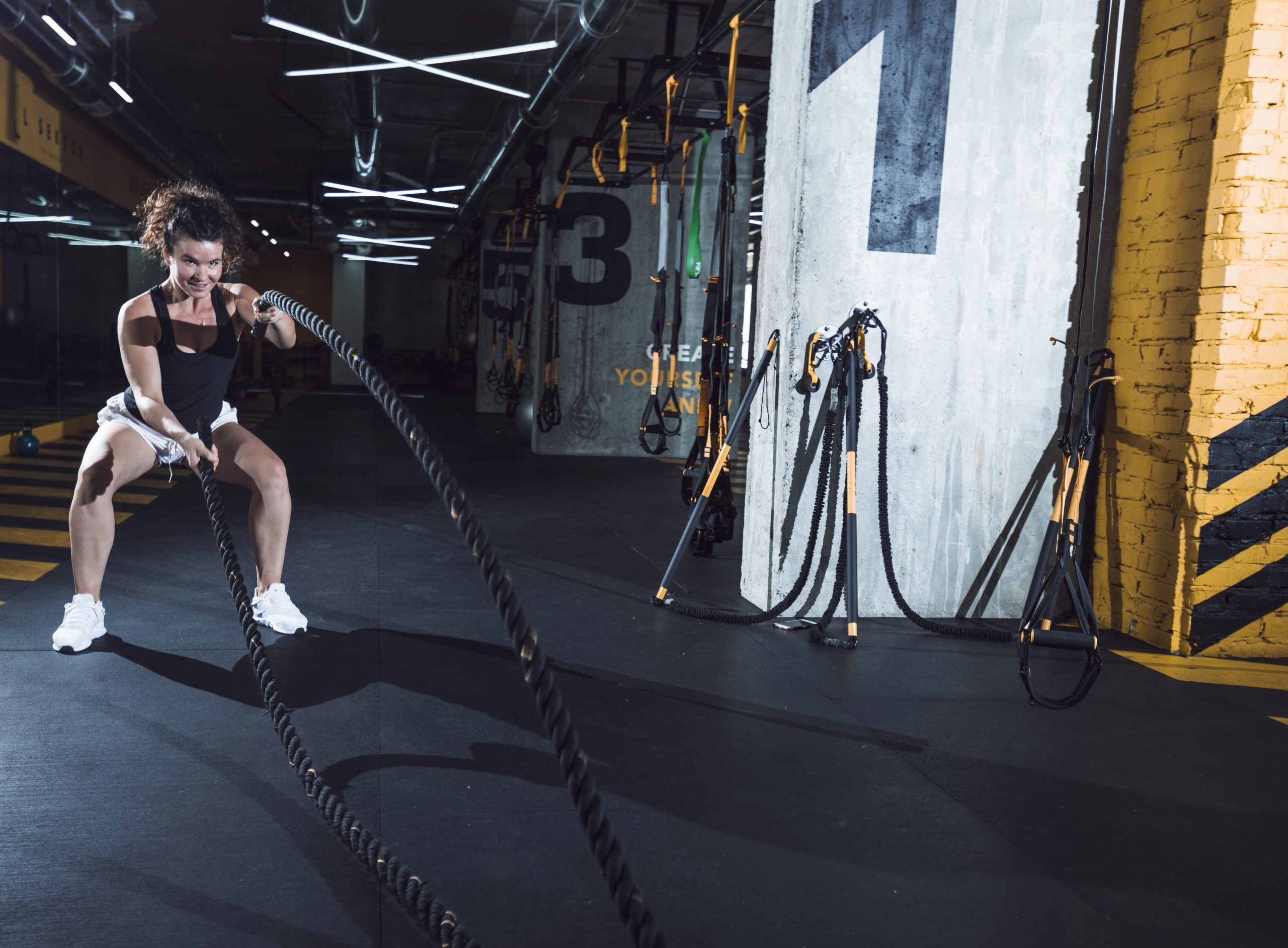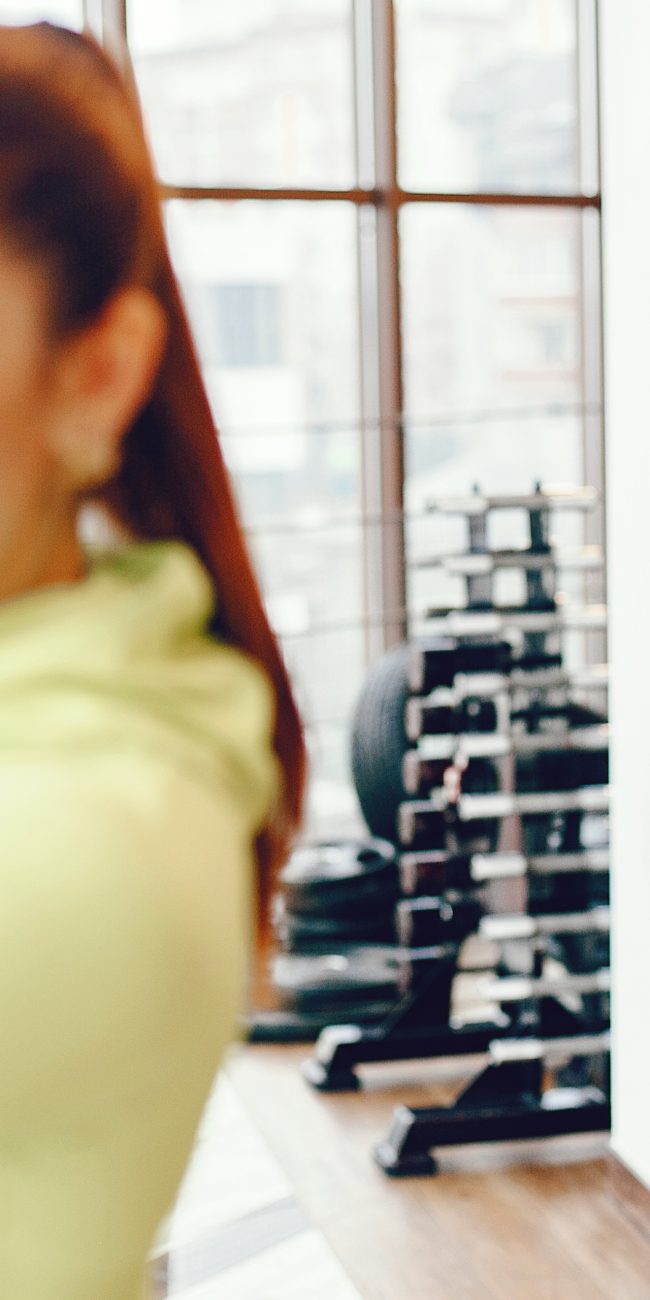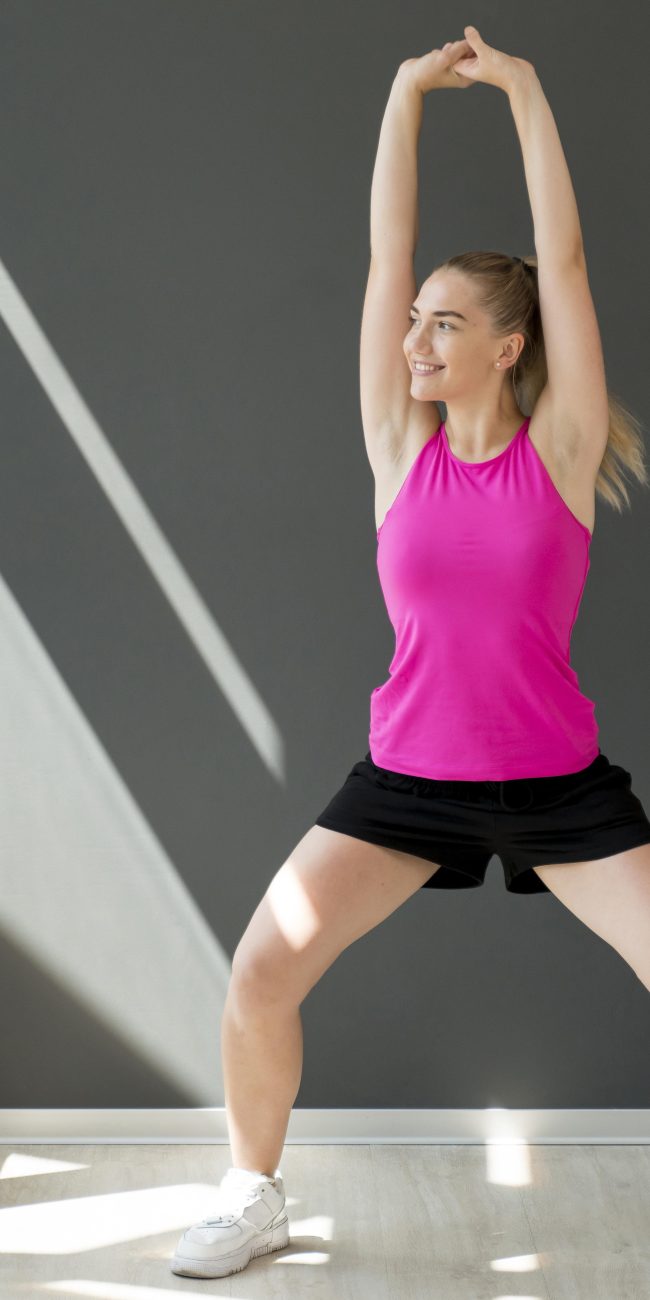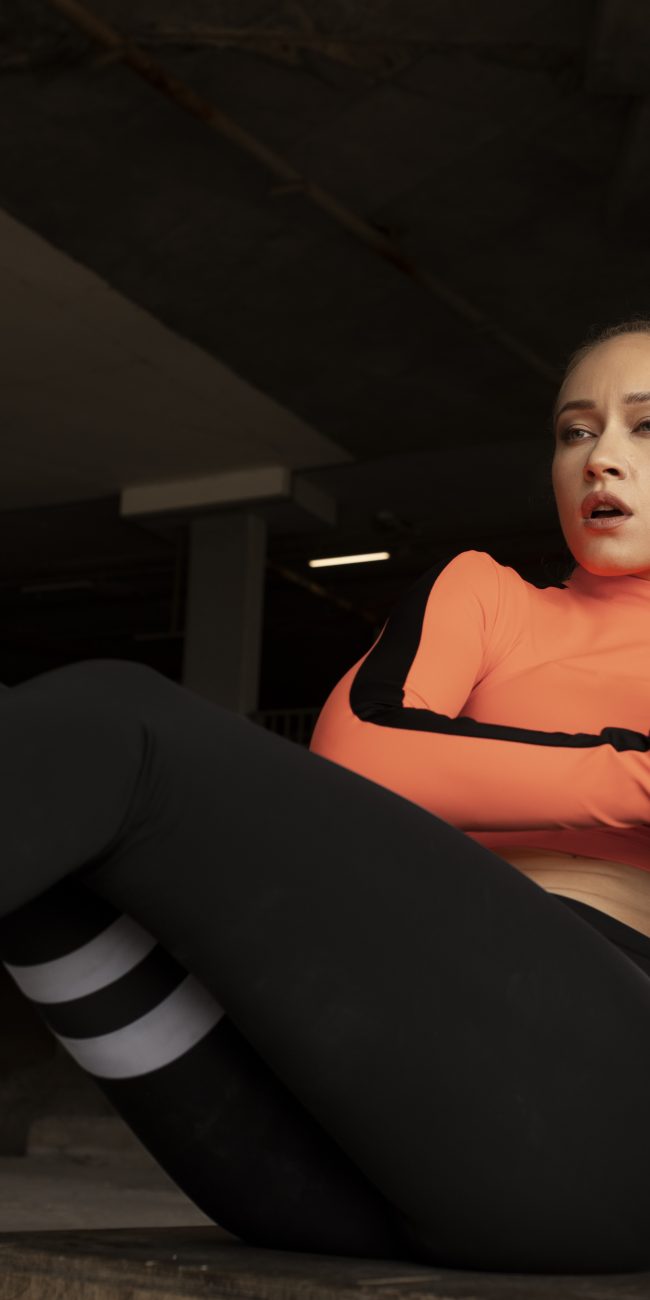
Walking into your first CrossFit gym can feel overwhelming. The clang of barbells, the speed of advanced lifts, and the intensity of seasoned athletes can intimidate even the most determined beginner. But here’s what many newcomers don’t realize: CrossFit is designed to be scalable, which means you don’t need years of training to get started. Every movement can be modified to fit your fitness level, making it one of the most accessible, and effective, approaches to functional fitness for women.
At its core, CrossFit is about moving better and living stronger. Unlike isolated gym routines, CrossFit focuses on compound exercises that engage multiple muscle groups at once, preparing your body for real-life demands, whether that’s carrying groceries, chasing kids, or performing in your sport.
Whether you’re beginning in a garage gym with a jump rope and kettlebell, or you’ve joined a local CrossFit gym with expert coaching, the key is to master the fundamentals before moving to advanced skills. By learning the right starting positions, maintaining good form and range of motion, and progressing steadily, you’ll avoid injury and build confidence.
In this guide, we’ll break down five beginner-friendly CrossFit exercises every woman should try. These foundational movements will help you develop strength, endurance, and stability, while introducing you to the pace and variety of a CrossFit WOD (workout of the day).
What Makes CrossFit Ideal for Beginners?
New to CrossFit? Here’s What to Know
CrossFit combines strength training, conditioning, mobility, and skill work into short, intense sessions called WODs. Each WOD can be adjusted for beginners by modifying weights, reps, or intensity. Instead of chasing heavy lifts or advanced movements like muscle-ups right away, beginners focus on basic CrossFit exercises with controlled reps and consistent practice.
CrossFit also builds community. Unlike traditional gyms where training is often solitary, a CrossFit class offers coaching, accountability, and encouragement. This group dynamic is especially beneficial for women who may feel intimidated starting their fitness journey alone.
Benefits of Functional Fitness for Women
For women, the appeal of CrossFit lies in its practicality:
- Lower body strength and posture: Moves like squats and lunges build hip stability, making daily tasks easier and safer.
- Balanced muscle development: Instead of isolating biceps or abs, CrossFit movements train different muscle groups together.
- Calorie burn and endurance: High-intensity intervals keep your heart rate elevated, promoting fat loss and cardiovascular health.
- Confidence and skill progression: Each week, you’ll notice improvements, maybe squatting deeper, holding a plank longer, or swinging a kettlebell with more control.
Start in a Garage Gym or a CrossFit Gym?
If you’re on a budget, a garage gym setup with basics like a kettlebell, jump rope, and pull-up rings is enough to get started. However, a CrossFit gym offers three major advantages:
- Expert coaching: Coaches correct form, ensuring safe execution.
- Scalable programming: Classes are structured so beginners and advanced athletes train side by side, each at their own pace.
- Community support: Training with others builds consistency and motivation.
If you’re serious about results and safety, starting at a local CrossFit gym is the smarter choice.
Move 1: Air Squat – Mastering the Basics of Lower Body Strength
The air squat is the foundation of CrossFit. Before you load a barbell, swing a kettlebell, or attempt advanced squat variations, you must learn to control your bodyweight squat.
Starting Position: Why It Matters in Every Move
- Stand with feet shoulder-width apart, toes slightly turned out.
- Keep your chest upright, shoulders back.
- Lower your hips back and down as if sitting into a chair.
- Ensure knees track in line with toes, not collapsing inward.
- Press evenly through your heels as you rise.
Mastering this starting position teaches proper hip hinge mechanics, which carry over into advanced CrossFit lifts like cleans, snatches, and overhead squats.
How to Engage Your Core During Each Rep
The air squat isn’t just about the legs. Proper squats demand strong core stability. Brace your abdominals as if preparing for a punch, this keeps your spine safe and posture strong. Breathe steadily, inhaling as you lower and exhaling as you rise.
Why It’s One of the Best CrossFit Moves for Beginners
- Strengthens quads, hamstrings, and glutes
- Builds mobility in hips and ankles
- Improves posture and balance
- Prepares you for weighted squats, goblet squats, and hang squat cleans
Once you’re comfortable with air squats, progress to goblet squats (holding a kettlebell to your chest) or add tempo squats, focusing on a slow descent for extra challenge.
Move 2: Ring Rows – Scalable Pull-Up Alternatives for Any Fitness Level
Pull-ups are one of CrossFit’s signature moves — but they’re tough for beginners. Enter the ring row, the perfect scalable alternative.
Choose a Variation That Suits Your Fitness Level
Adjust the angle of your body to scale difficulty:
- More upright = easier
- Feet further forward, body closer to parallel = harder
This adaptability makes ring rows a beginner-friendly CrossFit exercise you can grow with.
Reduce the Range of Motion if Needed
If full extension is challenging at first, reduce the range of motion by pulling only halfway and gradually increasing distance as you build strength.
Upper vs. Lower Body Strength Balance
Ring rows build pulling strength in your back, shoulders, and arms. This balances the upper body strength developed from push-ups and planks, setting the foundation for pull-ups, muscle-ups, and chest-to-bar pull-ups later on.
By including ring rows in your beginner program, you’ll prevent muscular imbalances and reduce the risk of shoulder injuries, common when beginners neglect pulling exercises.
Move 3: Kettlebell Swings – Full-Body Conditioning Made Simple
Few movements deliver as much return as the kettlebell swing. It’s a full-body exercise that combines strength and cardio into one explosive movement.
Starting Position: Core, Hips, and Grip
- Place the kettlebell on the ground in front of you.
- Hinge at the hips (not the knees) to grip the handle.
- Engage your core, keep back flat, and initiate the swing by driving hips forward.
- Swing the kettlebell to chest or shoulder height (Russian swing) while keeping arms straight but relaxed.
Build Muscle Through Consistent Movement
Each swing trains the glutes, hamstrings, and core while developing grip strength and shoulder stability. Unlike isolated exercises, swings demand coordination of multiple muscle groups, making them excellent for functional strength.
Kettlebell Swings in Your First CrossFit WOD
Because they elevate heart rate while strengthening muscles, kettlebell swings are often included in CrossFit WODs for beginners. A sample WOD might pair:
- 15 kettlebell swings
- 10 air squats
- 5 ring rows
Repeated for several rounds, this simple circuit builds strength, endurance, and conditioning without overwhelming a beginner.
Move 4: Push-Ups & Planks – Core and Upper Body Strength Essentials
Upper body strength is often an area where beginners — especially women — feel least confident. That’s why push-ups and planks are essential CrossFit training tools: they build strength, stability, and endurance without requiring equipment.
Push-Ups: The Foundation of Upper Body Power
- Starting position: Hands under shoulders, body in a straight line from head to heels.
- Lower slowly: Keep elbows tucked at about a 45-degree angle.
- Engage your core: Don’t let your hips sag or rise too high.
- Press back up strongly: Exhale as you extend arms to return to starting position.
Scaling options for beginners:
- Knee push-ups
- Incline push-ups against a box or wall
- Reducing the range of motion with plates under hands
These variations allow you to develop strength progressively until you can perform full push-ups.
Planks: Training Core Stability
The plank looks simple but demands deep core activation.
- Keep forearms or hands on the ground with elbows under shoulders.
- Maintain a straight spine, squeeze glutes, and engage abs.
- Start with 20–30 seconds and gradually increase your hold time.
Why push-ups and planks matter in CrossFit:
- They create balance with pulling moves like ring rows.
- They prepare your core and shoulders for advanced movements such as shoulder presses and cleans.
- They reinforce functional fitness by mimicking real-life demands on posture and strength.
Together, these moves help you build confidence in upper body strength, an essential part of every CrossFit workout.
Move 5: Deadlifts & Lunges – Build Functional Strength the Right Way
Deadlifts and lunges are staples of CrossFit exercises because they train different muscle groups that support everyday movement.
Deadlifts: The Ultimate Functional Strength Exercise
The deadlift teaches you to pick something up safely — whether it’s a barbell, a kettlebell, or even a child.
- Starting position: Feet hip-width apart, barbell close to shins.
- Brace core: Keep chest up, back flat, shoulders slightly ahead of bar.
- Lift with legs and hips: Push through heels, extend hips forward, and stand tall.
Beginner tips:
- Start with a goblet deadlift using a kettlebell before progressing to a barbell.
- Focus on form over weight, improper technique is the fastest way to injury.
- Build gradually: better to master 20 kg with perfect form than rush into heavy loads.
Lunges: Building Balance and Single-Leg Strength
Lunges are crucial for eliminating imbalances between legs.
- Step forward with one leg, lowering hips until both knees form 90° angles.
- Keep chest upright, avoid leaning forward.
- Alternate legs or perform walking lunges for added challenge.
Why deadlifts and lunges matter in CrossFit:
- They develop lower body strength and core stability.
- They improve balance for movements like squats and cleans.
- They train mobility and coordination while burning serious calories.
Deadlifts and lunges together are one of the best beginner CrossFit move combinations, setting you up for long-term progress.
How to Choose a CrossFit Program for Beginners
With hundreds of gyms and online programs out there, knowing where to start can feel overwhelming. Keep these principles in mind:
- Look for beginner-friendly programming
– The best CrossFit gyms clearly mark “Foundations” or “Intro to CrossFit” classes. - Check for scalability
– Every workout should allow modifications: lighter weights, fewer reps, or alternate exercises. - Balance of strength and conditioning
– A good program mixes cardio training (rower, jump rope, running) with lifting and bodyweight training. - Community and coaching
– New athletes thrive where coaches correct form and where members encourage each other.
If you’re unsure, attend a free intro class at a local CrossFit gym before committing.
Tips from a CrossFit Coach: Starting Smart and Safe
Every CrossFit coach will tell you: consistency and form matter more than speed or weight. Here’s what experienced trainers recommend:
- Train 3–4 times a week at first, with rest days in between.
- Prioritize form: A strong starting position in every rep prevents injury.
- Engage your core: Nearly every CrossFit move — from squats to deadlifts — depends on a braced midline.
- Improve range of motion gradually: Depth and flexibility come with time. Don’t force it.
- Choose variations that suit your level: Scaling isn’t weakness — it’s how you build strength safely.
Most importantly: be patient with yourself. CrossFit is a long game of skill, strength, and resilience.
Your First CrossFit WOD: What to Expect
A CrossFit WOD (Workout of the Day) may look intimidating, but beginner-friendly versions are simple, effective, and empowering.
Here’s an example of a starter WOD for women:
- 10 Air Squats
- 10 Ring Rows
- 10 Push-Ups (scaled if needed)
- 15 Kettlebell Swings
- 100m Row or 50 Jump Rope
Repeat for 3–4 rounds, resting 1–2 minutes between rounds.
Why this works for beginners:
- It balances upper and lower body strength.
- It includes cardio for endurance.
- It introduces the flow and pace of a typical CrossFit workout.
By repeating this style of WOD, you’ll quickly see improvements in stamina, mobility, and overall strength — without feeling overwhelmed.
Conclusion
CrossFit doesn’t require elite strength or advanced skills to get started. With scalable, beginner-friendly CrossFit moves like air squats, ring rows, kettlebell swings, push-ups, planks, deadlifts, and lunges, every woman can build a foundation for long-term progress.
If you’re new to CrossFit, focus on form, train consistently, and trust the process. These simple movements are more than workouts — they’re stepping stones toward greater strength, endurance, and confidence.
Remember: every CrossFit athlete you see today started with the basics. Master these five moves, and you’ll be ready to tackle more complex CrossFit exercises in no time.
FAQs: Beginner-Friendly CrossFit
1. Is CrossFit safe for beginners?
Yes. CrossFit is designed to be scalable, which means every workout of the day (WOD) can be adjusted to your fitness level. Beginners can start with lighter weights, reduced reps, or modified moves like ring rows instead of pull-ups. With the right coaching and focus on form, CrossFit is safe and effective.
2. What equipment do I need to start CrossFit?
You don’t need a full gym setup. Many beginner CrossFit workouts use simple equipment like a kettlebell, jump rope, or barbell. A garage gym setup with a pull-up bar and rings works well, but joining a CrossFit gym gives you access to expert coaching and community support.
3. How many times per week should beginners train CrossFit?
Most coaches recommend starting with 3–4 sessions per week. This gives your body time to recover while building strength and endurance. Training too often in the beginning may cause fatigue or injury, so consistency with rest is key.
4. What are the best beginner CrossFit exercises for women?
The five essential beginner CrossFit moves are:
- Air squats
- Ring rows
- Kettlebell swings
- Push-ups & planks
- Deadlifts & lunges
These movements improve lower body strength, core stability, and endurance while preparing you for more advanced CrossFit training later.
5. Do I need to be fit before starting CrossFit?
Not at all. CrossFit is meant to help you get fit. Many women start as complete beginners and progress gradually. Coaches at a CrossFit gym will tailor the workout to your current level, so you can train safely while building confidence.
6. What can I expect in my first CrossFit WOD?
A beginner-friendly CrossFit WOD might include air squats, push-ups, kettlebell swings, and rowing or jump rope. Expect 3–4 rounds of functional movements with rest in between. The session will be challenging but doable, leaving you energized and motivated.
7. How does CrossFit help with weight loss and toning?
CrossFit combines strength training and cardio, which helps burn calories during and after the workout (the “afterburn effect”). This combination supports fat loss, muscle toning, and functional fitness. Over time, consistent training improves posture, strength, and body composition.




